Frontend web development has witnessed significant advancements in recent years, especially with the emergence of some powerful JavaScript libraries like React.js and Vue.js.
These solutions have swiftly risen to prominence as the top choices for developing user interfaces and single-page applications.
React and Vue.js are popular among software developers all over the world. About 40.58% of users are fans of React, while 16.38% are more into Vue.js.
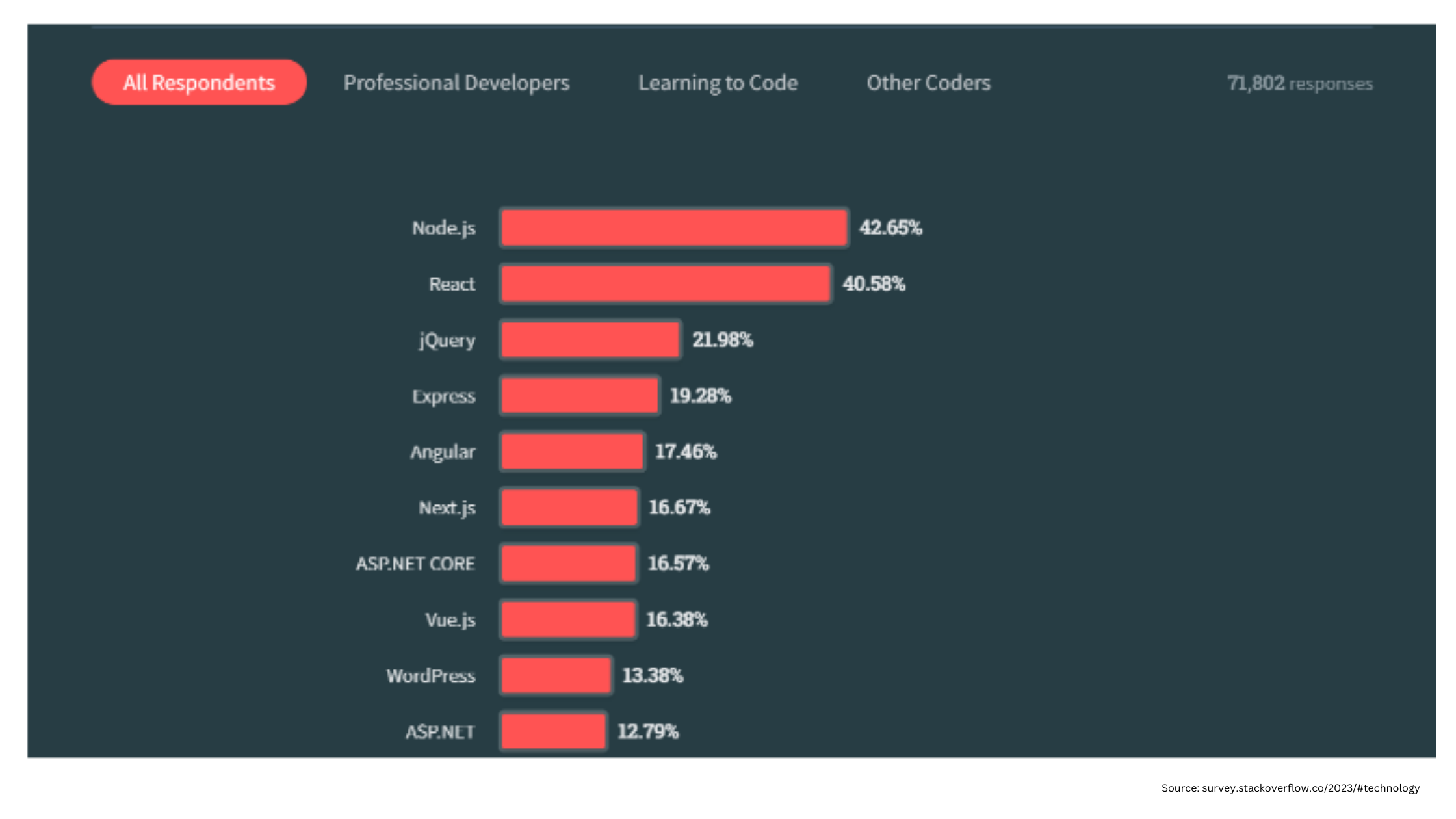
The landscape, however, is filled with both similarities and differences between React and Vue, making it a challenge to declare a clear winner.
In this blog post, we will look at a comprehensive exploration of React.js and Vue.js, scrutinizing their advantages, performance, and community support. The aim is to equip you with the insights needed to determine which front-end tech solution stands out as the ultimate MVP.
So, let’s just get started:
React.js: A Brief Overview
Born from the minds at Facebook in 2013, React.js has rapidly become a trusted companion for developers globally. As a JavaScript library, React utilizes Webpack for the automatic processing of React, JSX, and ES6 code, coupled with managing CSS file prefixes.
In 2011, a software engineer named Jordan Walke at Meta came up with the idea for React. It was inspired by XHP, an HTML component library for PHP. React was first used on Facebook’s News Feed in 2011 and then on Instagram in 2012. It became open-source at JSConf US in May 2013.
Additionally, there are approximately 21,245,471 websites that are using React. Out of these, 13,717,538 websites currently use React, while an additional 7,527,933 sites have used React historically.
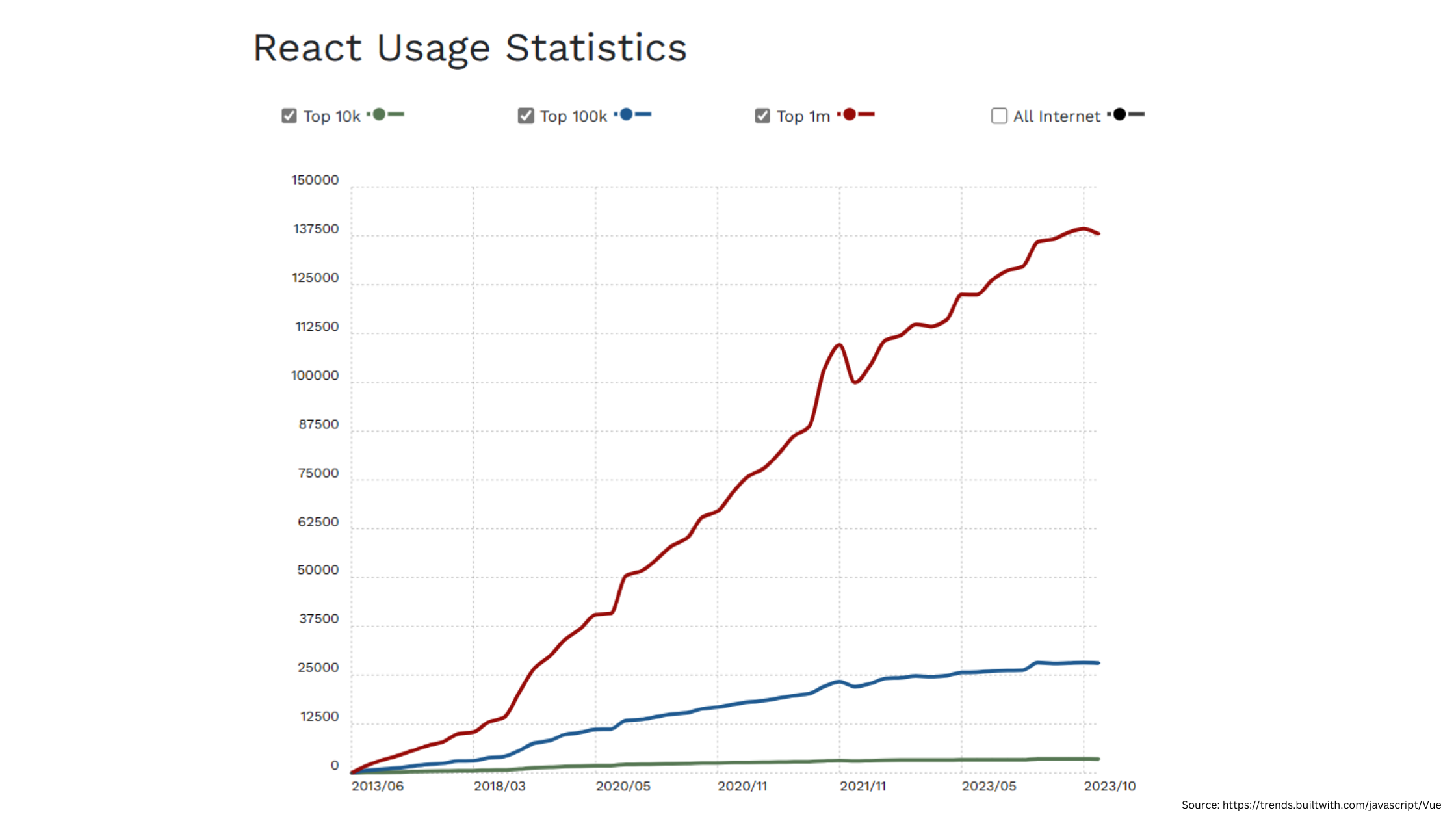
Besides, there are now various industries using React JS.
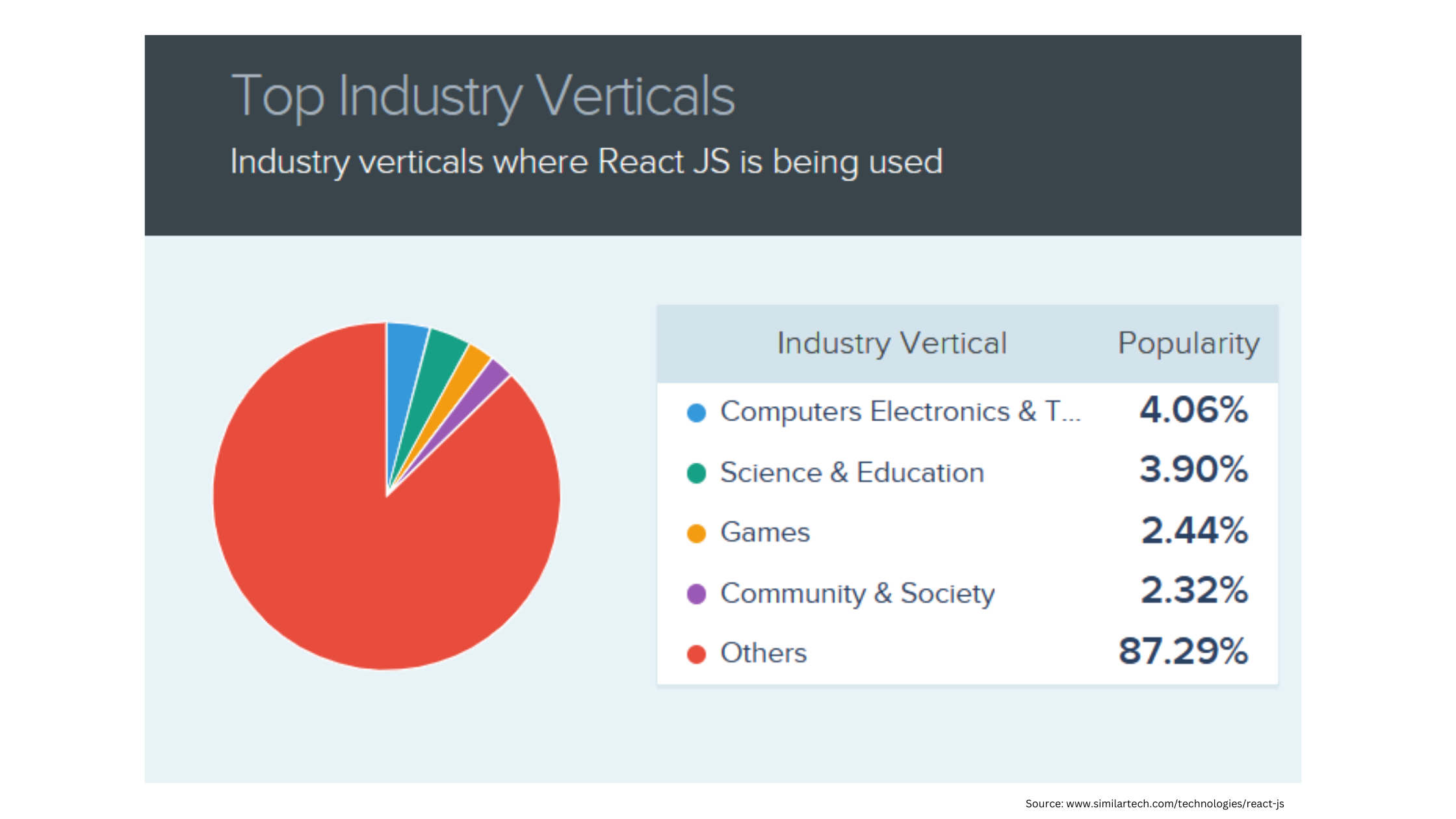
Beyond being a library for UI development, React extends its capabilities with Flux and React Native support for the entire application architecture.
Vue.js: The Basic Overview
Vue.js is the creation of former Google engineer Evan You, who brought this innovation publically in 2014. It is, again, an open-source JavaScript library that is designed with incremental adaptability in mind.
Its unique feature allows you to start small and grow gradually. You can easily integrate Vue.js into bite-sized portions of your project and then expand its use as needed.
Vue.js shares some similarities with React.js, such as employing a virtual DOM and supporting server-side rendering. However, Vue.js sets itself apart with its clean, no-frills API and its streamlined syntax.
Such flexibility has earned Vue.js a warm reception among novice developers. It is now a serious contender in the frontend framework face-off.
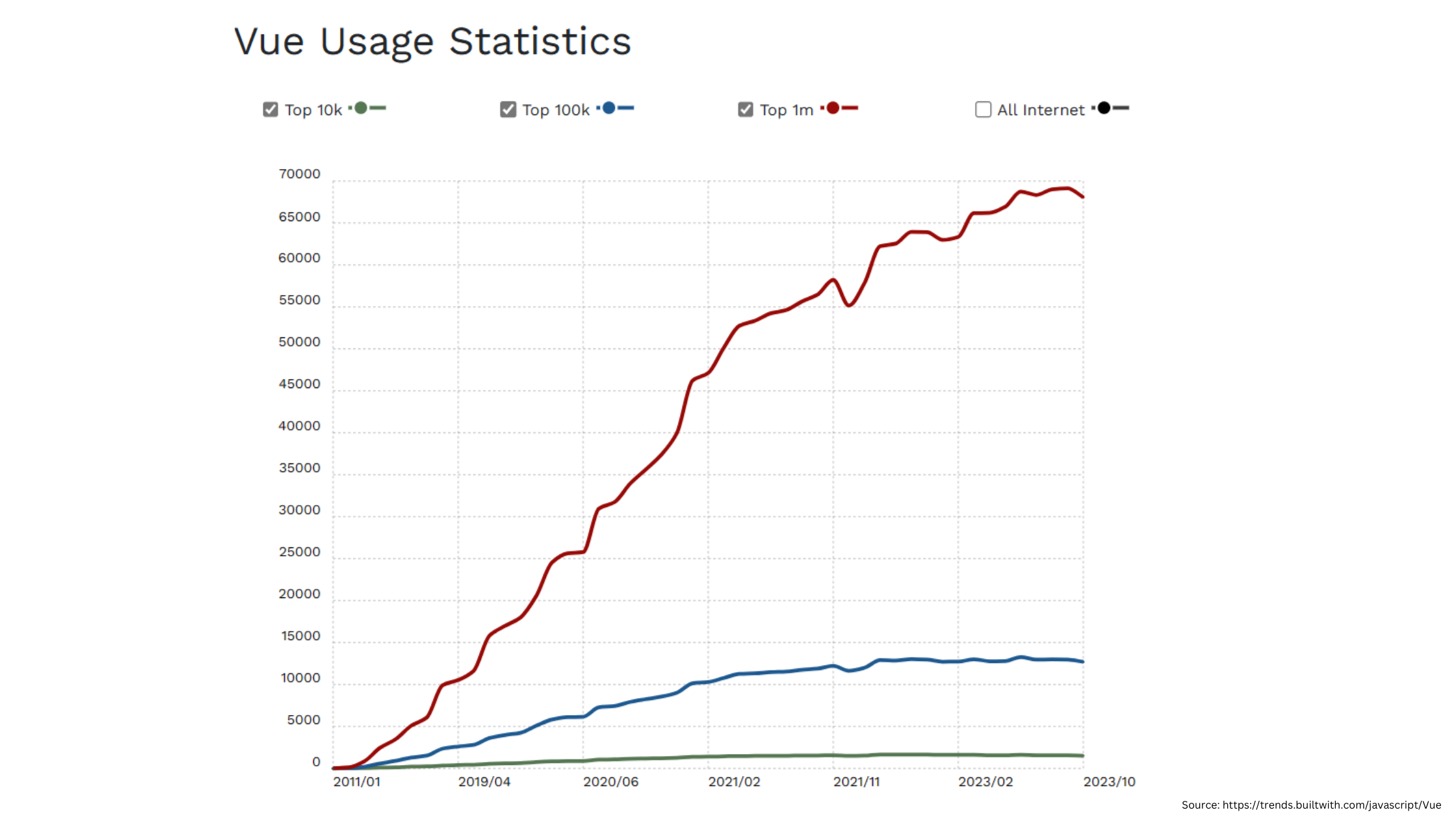
Now, let’s have a look at the features, advantages, and disadvantages of using both technologies in the web development industry.
The Pros of React.js
- Accelerating Development with Virtual DOM in React
React’s Virtual DOM significantly improves both user experience and developer efficiency. In simple terms, the Document Object Model (DOM) organizes web page elements in a tree structure. The challenge with traditional DOM lies in processing changes – it often updates the entire document tree, causing inefficiencies for large documents.
React.js tackles this by employing a Virtual DOM, an abstract copy that efficiently updates minimal user-driven changes without affecting the entire interface. This, coupled with React’s component isolation, leads to rapid updates and dynamic user interfaces, as seen in features like real-time Facebook chat and news feeds.
When you hire React.js developers, they benefit from quicker UI-object interactions and hot reloading, enhancing both performance and programming speed.
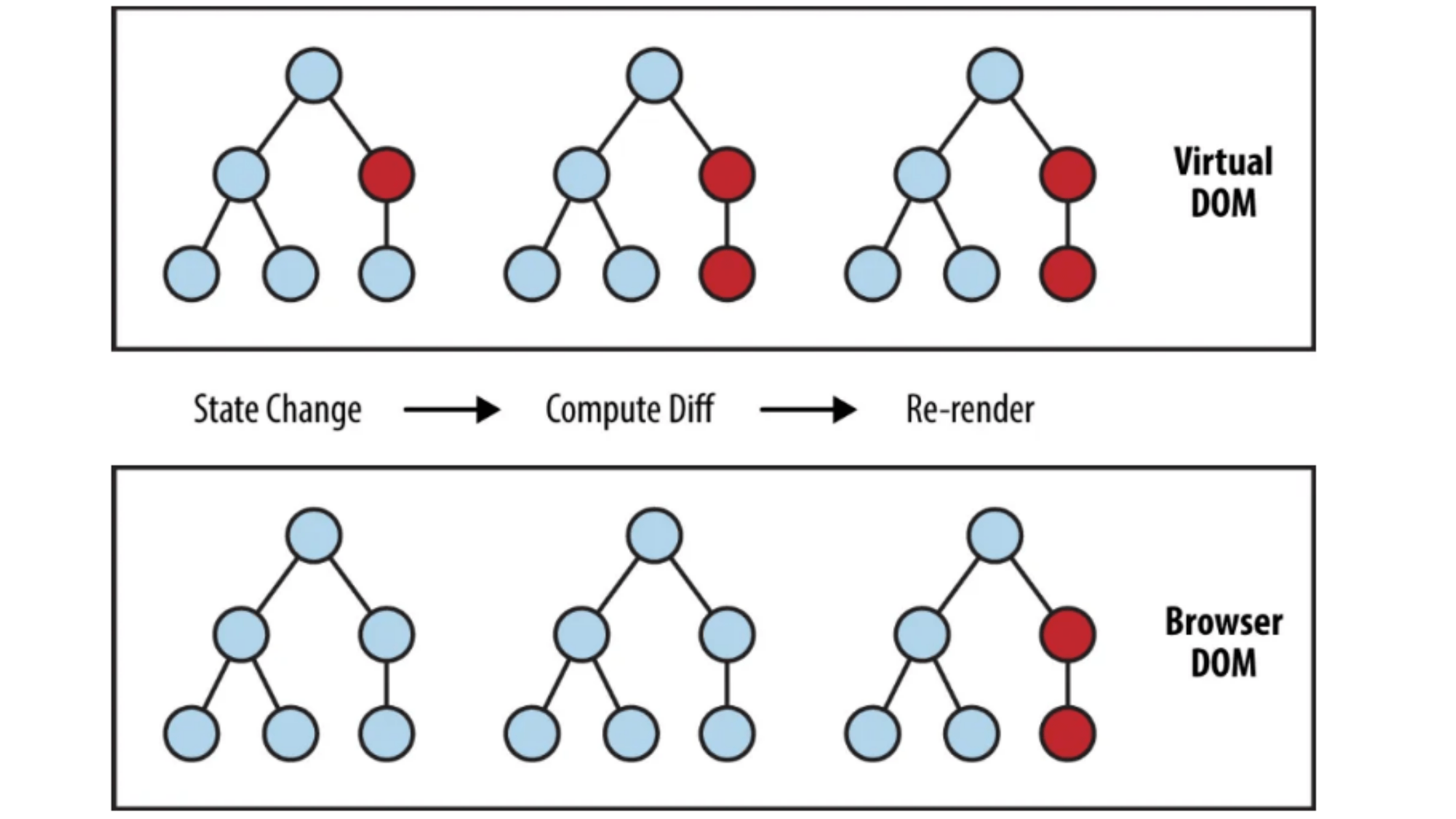
- Opportunity To Make Use of Reusable React Components
React offers another major advantage- the ability to easily use code components at different levels. This ultimately decreases the effort for coding and saves a lot of time. Just like how designers reuse the same assets to avoid remaking things like company logos, React brings this efficiency to programming.
In traditional programming, reusing components can be tough, especially during system upgrades, where changes can affect many components. React solves this by isolating components. When the developer makes changes in one component, it doesn’t affect others. Thus, it’s easy to manage updates and leads to a comfortable programming experience.
- One-Way Data Flow
Basically, in React, the data flows in one direction, which helps keep the code strong and steady. This means that when things get updated, child parts can’t affect parent parts. So, the changes are made only for certain components.
While this enhances code stability, it does demand extra effort to synchronize the model and view. Additionally, configuring updates in parent components triggered by changes in child components requires more time.

Although one-way data binding in ReactJS adds predictability, simplifying debugging.
The Cons of React.js
- Poor Documentation:
Documentation challenges in React stem from the frequent introduction of new tools. While Redux and Reflux enhance React’s capabilities, the rapid updates make it difficult for developers to seamlessly incorporate them.
- SEO Has Its Challenges:
Concerns about search engine indexing of dynamic ReactJS apps persist, but Google confirmed its crawlers can read dynamic content. Testing with Google Search Console is recommended for optimal SEO. While not a major issue, implementing server-side rendering requires expertise and careful execution to avoid complications.
The Pros of Vue.js
- Virtual DOM Makes Development Faster:
In web page rendering, the Document Object Model (DOM) plays a crucial role by organizing HTML elements in a tree structure. However, the conventional approach of refreshing the entire DOM proves inefficient, especially during user interactions.
Vue.js addresses this challenge by introducing a virtual DOM, which is essentially a copy of the original DOM that intelligently identifies elements requiring updates.

When you hire Vue.js developers, they leverage and enhance these features of Vue.js to optimize rendering speed and overall application performance.
- Vue is Lightweight
The beauty of Vue lies in its minimalist design. The framework’s downloadable zip is a mere 18 KB. This compact size contributes to faster loading times. Also, this makes Vue a great choice for SEO.
Additionally, from a user experience perspective, the lightweight nature of Vue translates to quicker initial page rendering and smoother interactions.
In essence, Vue’s small footprint proves that great things can indeed come in small packages, delivering efficiency without compromising on functionality. The reason why, today, more than 35% of the top developers are interested in using Vue.js again.
- Offers Data Binding Options
Data binding establishes a crucial link between the data model (source) and the view DOM or HTML template.
Vue, as a framework, offers flexibility in data binding. By default, it supports one-way flow, but developers can easily opt for a bidirectional approach using the v-model directive. This adaptability empowers developers to choose the most suitable option based on their project requirements or personal preferences.
- Supports Integration With Other Frameworks
Adopting Vue is an easy transition even if you’re already a Pro in other frameworks like React or Angular. Vue’s compatibility is a strength, allowing effortless integration with existing frameworks.
This flexibility enables developers to customize their UI projects according to specific needs while maintaining cohesiveness with other technologies and frameworks. In essence, Vue serves as a versatile addition to your tech stack. It offers adaptability and ease of integration for a smoother development experience.
The Cons of Vue.js
- Language Constraint
A lesser-known fact about VueJS is its initial development in China, contributing to its immense popularity in the region. However, this geographical origin brings a unique challenge: much of the plugin descriptions, instructional manuals, and forum conversations are in the Chinese language. This language disparity can potentially act as a barrier for developers who rely on translations to proceed with their work.
- Fewer Plugins
Vue’s streamlined approach, with a reduced reliance on plugins, reflects its commitment to simplicity and efficiency. While this might initially surprise developers used to a more plugin-heavy ecosystem, it aligns with Vue’s philosophy of providing essential features without unnecessary complexity. Adjusting to this leaner plugin landscape in Vue may lead to a shift in perspective for developers.
Now, let’s compare Vue.js and React.js.
The Comparison of Vue.js and React.js
- Performance
When it comes to the arena of performance, both React.js and Vue.js are heavyweights. Each of them is armed with a virtual DOM that enhances speed. However, there are some nuances worth noting.
React.js, with its mature ecosystem and widespread usage, benefits from extensive optimizations and fine-tuning. Its virtual DOM efficiently updates only the necessary parts. This leads to rapid rendering and responsiveness.
Vue.js, while also leveraging a powerful virtual DOM, distinguishes itself with a more streamlined and beginner-friendly design. Vue’s reactivity system enables efficient updates.
Key Takeaway:
Ultimately, the performance comparison between React.js and Vue.js is project-dependent.
- Development
React.js prides itself on its ‘learn once, write anywhere’ philosophy. It allows you to create rich user interfaces for both web and mobile applications without needing to rewrite existing code.
Furthermore, React.js’s component-based structure promotes code reusability, which makes development faster. On the other hand, Vue.js is known for its seamless integration capabilities. Its progressive nature allows developers to gradually adopt its features according to project requirements.
This makes Vue.js an ideal choice when you need to retrofit an existing project with a new front-end framework. Not to mention, Vue.js provides a clear separation of concerns between its templates, scripts, and styles. So, Vue.js offers a more organized and maintainable codebase.
Key Takeaway:
Both React.js and Vue.js frameworks have distinctive characteristics that play a crucial role during development.
- Tools
Each framework offers a robust set of tools designed to simplify and streamline the development process. React.js comes equipped with Create React App, a command-line tool that saves developers from the hassle of setting up a new React project from scratch.
It handles the configuration, allowing you to focus on the code.
For debugging, the React DevTools browser extension proves invaluable. It offers insights into component hierarchies in the virtual DOM.
Vue.js counters with Vue CLI, a powerful command-line interface for rapid Vue.js development. It helps set up new projects, scaffold components, and install plugins. And with Vue.js DevTools, you get a browser extension to debug your applications effectively.
Key Takeaway:
So, whether it’s React.js or Vue.js, each has a toolkit ready to aid you in crafting your next masterpiece.
- Popularity
A glance at the GitHub star count reveals React.js’s colossal popularity. It has over 160,000 stars. Its vast community and strong backing from Facebook only add to its appeal, making it a go-to choice for many developers.
Despite being a relatively younger framework, Vue.js has garnered a remarkable and enthusiastic following. Demonstrating its popularity, Vue.js proudly boasts over 180,000 stars on GitHub, slightly surpassing React.js in this particular metric.
Key Takeaway:
Vue.js wins with a higher number of stars on GitHub than React.
- Learning Curve
When it comes to learning frontend frameworks, the ride differs between React.js and Vue.js. For those fresh to the world of frontend development, Vue.js may seem like a gentle introduction.
Its syntax is considered simpler, and its well-detailed documentation serves as a reliable road map for beginners. So, if you’re just setting foot into front-end development, Vue.js could be your friendly tour guide.
On the flip side, if JavaScript is already in your repertoire, you might find yourself vibing with the rhythm of React.js. Given its roots in JavaScript, seasoned coders often find it more instinctive to follow.
Key Takeaway:
Frontend beginners might find Vue.js to be a gentle introduction, while seasoned coders may prefer the instinctive nature of React.js due to its roots in JavaScript.
- Community Support and Ecosystem
When comparing React.js and Vue.js, it’s important to take into account the communities associated with these frameworks. The strength of a community can significantly impact the support and resources available to developers.
Firstly, React.js is a widely utilized JavaScript library with a substantial global presence. Developed under the expertise of Facebook, it boasts a thriving community of developers who actively contribute their knowledge, address queries, and assist fellow developers.
On the other hand, Vue.js is a newer player in the field.
Key Takeaway:
React.js has a robust global community supported by Facebook, while Vue.js is a newer contender in the field.
Also Read: Building Cross-Platform Apps with React Native
Closing Words
As we conclude this guide on React.js and Vue.js, if you’re eagerly anticipating our verdict on the best JavaScript framework in 2024, our unbiased answer leans towards both.
The widespread popularity of React.js seems poised to maintain its dominance, with Vue.js likely requiring more time to catch up.
However, it’s crucial to acknowledge that there are legitimate scenarios where Vue.js might make more sense than React.js. To make an informed decision aligned with your specific business needs, we recommend reaching out to our mobile app development experts.
Whether you’re considering React.js for a large-scale application or Vue.js for a smaller, more straightforward project, we offer developers on-demand. You can hire dedicated React.js developers and Vue.js developers as needed.
Our professionals are skilled at transforming complex project requirements into high-performing applications.




